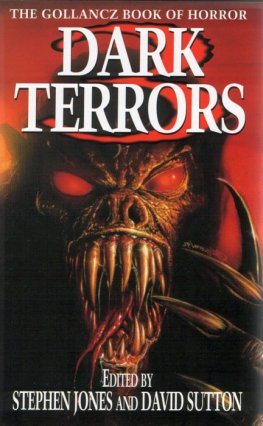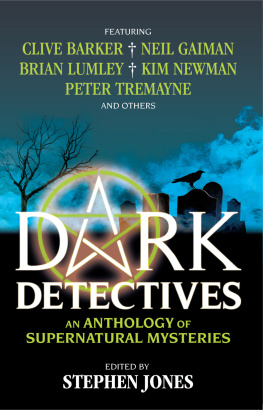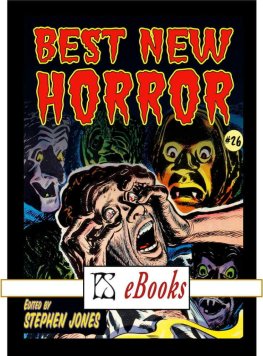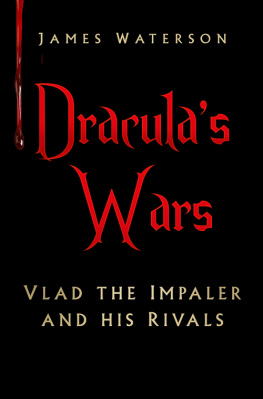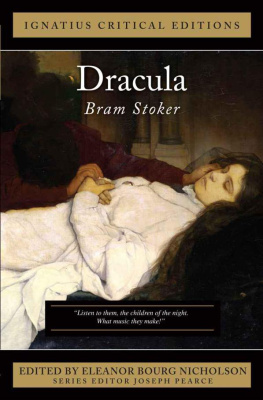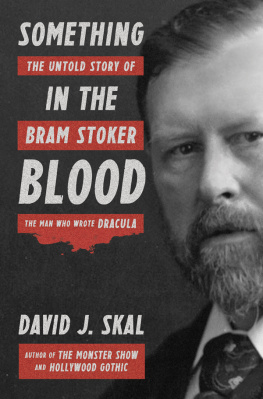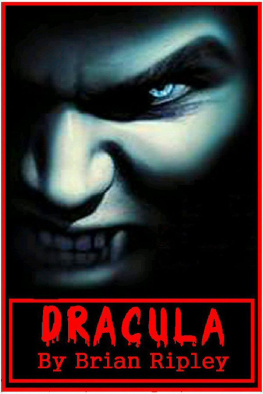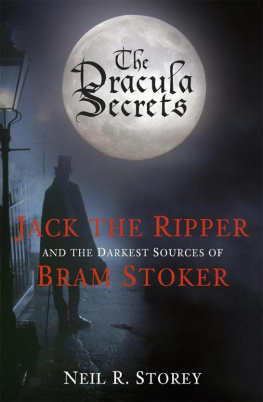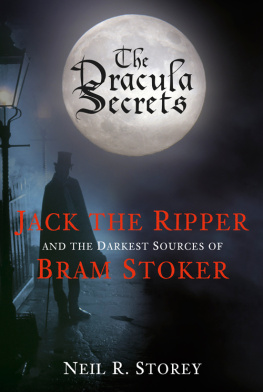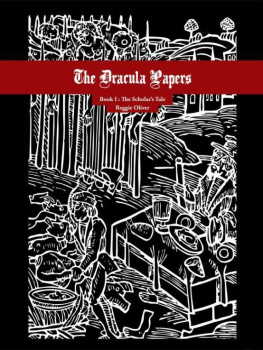Stephen Jones - The Mammoth Book of Dracula
Here you can read online Stephen Jones - The Mammoth Book of Dracula full text of the book (entire story) in english for free. Download pdf and epub, get meaning, cover and reviews about this ebook. year: 2011, publisher: Running Press, genre: Art. Description of the work, (preface) as well as reviews are available. Best literature library LitArk.com created for fans of good reading and offers a wide selection of genres:
Romance novel
Science fiction
Adventure
Detective
Science
History
Home and family
Prose
Art
Politics
Computer
Non-fiction
Religion
Business
Children
Humor
Choose a favorite category and find really read worthwhile books. Enjoy immersion in the world of imagination, feel the emotions of the characters or learn something new for yourself, make an fascinating discovery.

- Book:The Mammoth Book of Dracula
- Author:
- Publisher:Running Press
- Genre:
- Year:2011
- Rating:3 / 5
- Favourites:Add to favourites
- Your mark:
- 60
- 1
- 2
- 3
- 4
- 5
The Mammoth Book of Dracula: summary, description and annotation
We offer to read an annotation, description, summary or preface (depends on what the author of the book "The Mammoth Book of Dracula" wrote himself). If you haven't found the necessary information about the book — write in the comments, we will try to find it.
The Mammoth Book of Dracula — read online for free the complete book (whole text) full work
Below is the text of the book, divided by pages. System saving the place of the last page read, allows you to conveniently read the book "The Mammoth Book of Dracula" online for free, without having to search again every time where you left off. Put a bookmark, and you can go to the page where you finished reading at any time.
Font size:
Interval:
Bookmark:


~ * ~
The Mammoth Book of
DRACULA
Ed by Stephen Jones
Scanned & Proofed by MadMaxAU
~ * ~
CONTENTS
BRAM STOKER
CHRISTOPHER FOWLER
THOMAS LIGOTTI
MANDY SLATER
RAMSEY CAMPBELL
MANLY WADE WELLMAN
NANCY KILPATRICK
NANCY HOLDER
BRIAN LUMLEY
BASIL COPPER
KIM NEWMAN
HUGH B. CAVE
BRIAN MOONEY
ROBERTA LANNES
LISA MORTON
NICHOLAS ROYLE
PAUL McAULEY
GUY N. SMITH
JAN EDWARDS
R. CHETWYND-HAYES
GRAHAM MASTERTON
TERRY LAMSLEY
JOHN GORDON
JOEL LANE
BRIAN STABLEFORD
MICHAEL MARSHALL SMITH
CONRAD WILLIAMS
CHRIS MORGAN
MIKE CHINN
CHARLAINE HARRIS
BRIAN HODGE
PETER CROWTHER
F. PAUL WILSON
JO FLETCHER
~ * ~
But first, on earth as Vampyre sent,
Thy corse shall from its tomb be rent;
Then ghastly haunt thy native place,
And suck the blood of all thy race;
There from thy daughter, sister, wife,
At midnight drain the stream of life;
Yet loathe the banquet which perforce
Must feed thy livid, living corpse,
Thy victims, ere they yet expire,
Shall know the demon for their sire;
As cursing thee, thou cursing mem,
Thy flowers are withered on the stem.
LORD BYRON The Giaour (1813)
~ * ~
INTRODUCTION
I Bid You Welcome
DO WE REALLY need another collection of vampire stories? That is the question I had to ask myself before compiling this present volume. In the past few years, the bookshelves have been groaning under the weight of new vampire fiction. There have been countless novels, collections and anthologies published about every conceivable permutation of the undead and, truth to tell, most of it has been quickly forgettable. However, thanks to the success of Stephenie Meyers Twilight books and films, along with the TV series True Blood (based on the novels by Charlaine Harris), vampires have never been so popular. These days the undead have become a sub-genre in themselves. As my colleague Kim Newman has cleverly remarked elsewhere, vampire fiction has become the Star Trek of horror.
When my publisher and I began discussing a follow-up volume to our very successful 1992 anthology, The Mammoth Book of Vampires, we agreed that we didnt want to produce just a second collection of stories. So after careful deliberation, I decided that it might be interesting to see if I could compile a loosely-constructed, fictionalized history of the most memorable vampire of them all -Count Dracula. You hold the result in your hands.
Of all the fictional vampires ever created, Dracula continues to endure more than a century after he was created by Bram (Abraham) Stoker. Born in Dublin, Ireland, in 1847, Stoker was a sickly child until he discovered books at around school age. A qualified barrister, his first love was always the theatre, and while working as a civil servant he was introduced to the greatest actor-producer of his time, Henry Irving. The two became friends, and in December 1878 Stoker assumed the acting managership of Irvings Royal Lyceum Theatre in London, much to the dismay of his family. The same year Stoker married Oscar Wildes ex-sweetheart, the Irish-born Florence Anne Lemon Balcombe (whom George du Maurier, author of Trilby, described as one of the three most beautiful women he had ever seen).
Although he had written the occasional short story, it was during this period that Stoker really began to concentrate on his fiction. Possibly inspired by J. Sheridan Le Fanus vampire novella, Carmilla (1871), he began working on a novel manuscript entitled The Un-Dead. It was finally published in an edition of 3,000 copies as Dracula in June 1897, the year of Queen Victorias Diamond Jubilee. The book received mixed reviews (appalling in its gloomy fascination) and although it sold steadily, Stoker never earned much money from it. Unfortunately, Stokers subsequent novelsThe Mystery of the Sea, The Jewel of the Seven Stars, The Lady of the Shroud and The Lair of the White Wormfailed to achieve even comparable success.
The author loosely based his character on the mid-fifteenth century Wallachian prince, Vlad Tepes IV, known as Vlad the Impaler because of his predilection for impaling live victims on sharpened wooden stakes while he dined. For the Counts physical form, Stoker took his hero and employer Henry Irving as his inspiration.
Following Irvings death in 1905, Stoker suffered a stroke which left him weakened and partially sighted for the rest of his life. Also suffering from a degenerative kidney disease, possibly complicated by tertiary syphilis, Bram Stoker died on April 20th, 1912, the same week that the Titanic hit an iceberg and sank in the Atlantic.
The following year, Florence Stoker offered her husbands working notes for Dracula at auction. They were sold for little more than two pounds. In 1914 she published Draculas Guest, a collection of her husbands short stories, including the self-contained chapter of the title, which was originally omitted from Stokers novel because of length.
Since its authors death, Dracula has gone on to influence countless imitators and formed the basis of a worldwide entertainment industry created around the character.
Dracula has been immortalized in plays, movies and on television by Max Schreck, Raymond Huntley, Bela Lugosi, John Carradine, Christopher Lee, Jack Palance, Louis Jourdan, Frank Langella, Gary Oldman and numerous other, less memorable, actors. In fiction he has met everyone from Sherlock Holmes to Batman. He has appeared in cartoons and comic books, and his image has been used to sell everything from jigsaw puzzles to breakfast cereals. Like Mickey Mouse, James Dean and Marilyn Monroe, Dracula has become a twenty-first century icon. He is also very big business.
In his excellent 1990 study Hollywood Gothic, author David Skal has pointed out that the appeal of Dracula is decidedly ambiguous. Most monsters take and trample. Dracula alone seduces, courting before he kills. Unlike other monsters, he is not always recognizable as such. Dracula looks too much like one of us. In the literature of the vampire, the monster could be someone we know or, even worse, ourselves.
As with my other Mammoth volumes, I have collected together several reprints which are particular favourites of mine, plus original stories by established writers and a few newer names. I believe that only in this way can the horror genre, particularly the anthology, hope to survive and grow.
I trust you will enjoy this volume as it asks how the King of the Vampires would adapt to the social and technological changes that continue to shape the second decade of the twenty-first century. Is it possible that the Counts undead condition could be cured by modern medicine? How would the mythology perpetuated by literature and movies have affected the existence of a real bloodsucker? And what if Dracula found himself ruler of a world controlled by vampires? Or perhaps poverty, crime, political instability and ecological disaster will result in the Counts final destruction ... ?
Of course you can dip in and out of the book if you preferas the reader that is your prerogative. However, I have designed this volume to be read from the beginning through to the end, thereby creating a loose historical chronicle of Count Dracula, stretching from the Victorian era through to the last millennium and beyond. As an added bonus, I have also included the long-lost Prologue to a theatrical version of
Next pageFont size:
Interval:
Bookmark:
Similar books «The Mammoth Book of Dracula»
Look at similar books to The Mammoth Book of Dracula. We have selected literature similar in name and meaning in the hope of providing readers with more options to find new, interesting, not yet read works.
Discussion, reviews of the book The Mammoth Book of Dracula and just readers' own opinions. Leave your comments, write what you think about the work, its meaning or the main characters. Specify what exactly you liked and what you didn't like, and why you think so.

